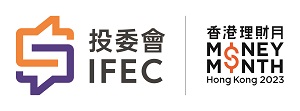Portfolio Pulse: Future Transition Multi-Asset Fund
Eyes on the future with an innovative asset allocation strategy
Mar 2023 (1-minute read)

#IFEC #TheChinFamily #HKMoneyMonth2023 #HKMM2023 #DigitalFinanceHero
Digital education in action
The world is transitioning to technology-based learning methods. Even before COVID-19, there was already high growth and adoption in education technology. We believe the size of digital education market could be even larger now in the wake of the COVID-19 pandemic which made many educational institutions and organisations to rapidly adapt technology in education.
Digital education has made education more efficient, scalable and accessible, changing how the classroom looks and education is delivered. It is redefining how education is being accessed. It is no longer for the young, but rather supports all learners and allows organisations to upskill and reskill employees as businesses evolve, helping to bridge workforce skills gap.
Digital Education also raises the quality of education in providing a truly personalised learning experience tailored to an individual’s educational needs, approach and pace. It is therefore considered to be a more effective way of learning.
Spanning across industries
Currently, digital education has been applied to the following areas:

![]()
Supporting distance learning with online learning platforms
![]()
Using online platforms to help upskill the workforce
![]()
Using augmented reality (AR) or virtual reality (VR) to enhance learning
![]()
Developing digital libraries
Harnessing the future of digital education
Digitalisation is driving the education sector forward to embrace long-term investment opportunities:
![]()
![]()
Conclusion
Digital transformation has transformed sectors such as healthcare, automotive and automation in addition to the education sector, creating new investment opportunities. Keep abreast of the latest trends and knowledge in the digital world, and you may find out more possibilities in the investment world.
J.P. Morgan Asset Management is among the supporting organisations of Hong Kong Money Month 2023. This is a month-long campaign on digital financial literacy. Find out more.
Provided for information only based on market conditions as of date of publication, not to be construed as investment recommendation or advice. Forecasts and estimates are indicative of macro trends, may or may not come to pass.
Diversification does not guarantee investment return and does not eliminate the risk of loss.
Images are for illustrative purposes only. Source: J.P. Morgan Asset Management, 28.02.2023.
1. Forecasts, projections and other forward looking statements are based upon current beliefs and expectations. They are for illustrative purposes only and serve as an indication of what may occur. Given the inherent uncertainties and risks associated with forecast, projections or other forward statements, actual events, results or performance may differ materially from those reflected or contemplated. For illustrative purposes only based on current market conditions, subject to change from time to time. Not all investments are suitable for all investors. Exact allocation of portfolio depends on each individual’s circumstances and market conditions.
2. Source: Secondary Literature, expert interviews, Markets and Markets “Digital Education Market” report (May 2020).
Eyes on the future with an innovative asset allocation strategy
Capturing dividend opportunities across Asia
With yields hovering close to decade highs across many fixed income sectors, investors are presented with a “menu of options”. Still, selectivity matters as recession risks loom.
A pulse check on our Asian bond portfolio
After a difficult year for bonds, we explain why fixed income could once again prove to be a useful diversifier for portfolios.
As the Fed’s rate hike cycle concludes, bonds can present an important source of income and diversification for portfolios.
We share our views on Asian bonds and how we position in 2H 2023.
We explain why investors should pay greater attention to quality bonds.
We share insights on the Japanese equity strategy while riding on cyclical and structural tailwinds.
ASEAN, China and the broader Asia ex-Japan region present ample opportunities for long-term growth.
Here is a chart indicating IG bond opportunities as US Treasury yields stay elevated.
A quick look at how the Fund is positioned as recession risks loom and financial conditions tighten.
A quick take on our strategy in investing Asian income assets amid global economic slowdown and China’s reopening.
We highlight the impact of China’s reopening on Asia equities and the key secular trends driving long-term growth in the region.
Flexibility is at the heart of our approach to fixed income markets.
Income investing can help tap investment opportunities while managing volatility through cash flows from a diversified portfolio of income generating assets.
We share the key themes driving equities as China reopens.
We share the key themes that are driving equity investment opportunities in ASEAN.
Increasing demand for healthcare services globally is presenting growth opportunities.
Going beyond the traditional fixed income sectors to tap into the potential of securitisation.
Fixed income isn’t just government or corporate bonds, it also includes non-traditional debt securities.
The securitisation market has regained much ground in the past decade.
Diversification sounds easy, but how to do it effectively?

Feel free to call our InvestorLine or email us if you would like further information about our Funds or J.P. Morgan DIRECT Investment Platform services:
